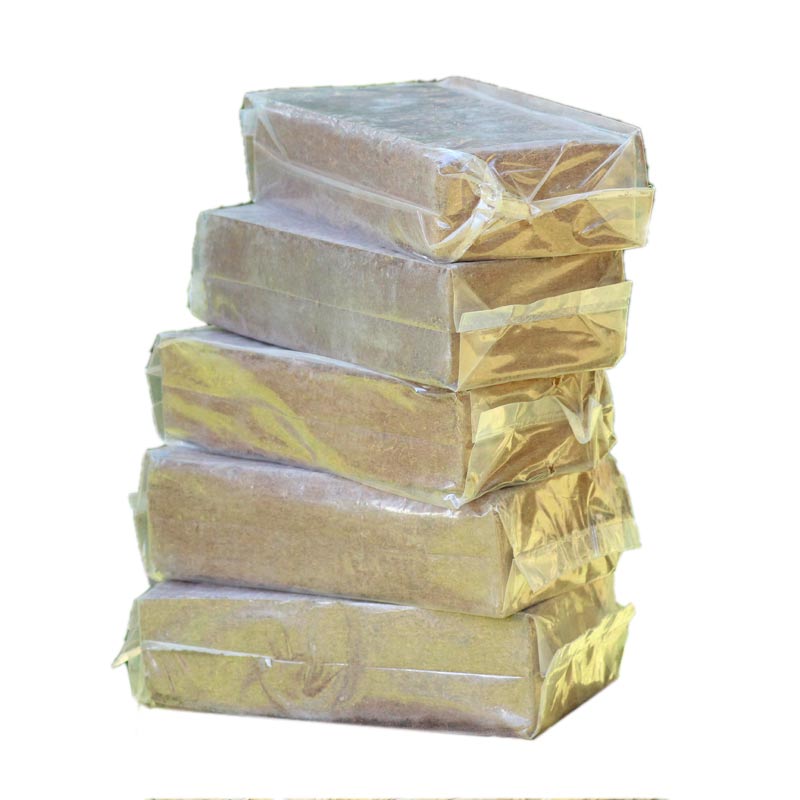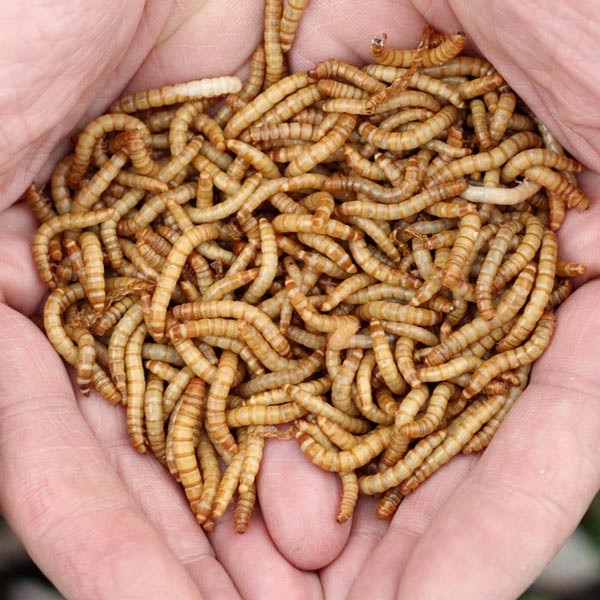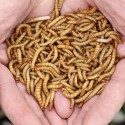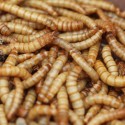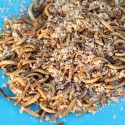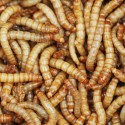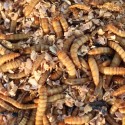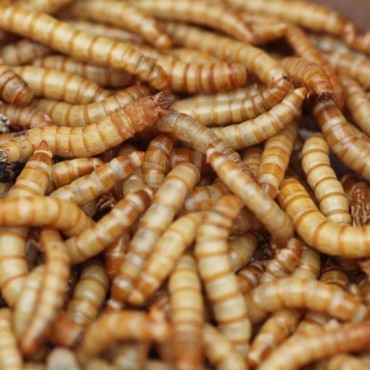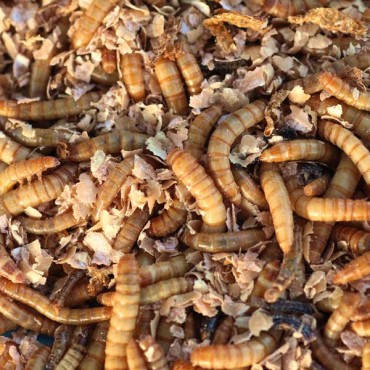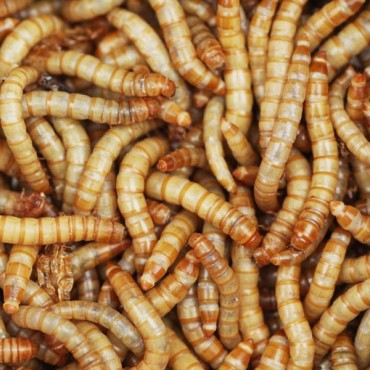Overview
The mealworm is also known as the darkling beetle. During its lifespan it will go through four distinct stages of development: egg, larva, pupa, and adult. The amount of time it takes the insects to go through these stages depends on the temperature of their environment and availability of food. The stage of development you receive from us is the larval stage of the beetle. In the wild, while in the larval stage, it will consume dried grasses, leaf litter, and decomposed organic matter. They typically remain hidden under wood logs, underneath leaf litter, and amongst rotten vegetation. A mealworm will grow to about 1 inch in length before it becomes a pupa; after two to three weeks of pupation, it will finally change into a black beetle. Generally, the life cycle of a mealworm can take anywhere between four months and a year.Mealworms are typically used as a pet food for captive reptiles, fish, and birds. They can also be provided to wild birds in bird feeders, particularly during the nesting season. Mealworms are useful for their high protein content. They are also used as fishing bait.
Habitat Recommendations
Mealworms do not need a large space in which to live. For 1000 mealworms you can use any of the following:- *5 gallon storage tote
- Minimum container dimensions: 16.0" L x 12" W x 9" H
- 5 gallon bucket
Bedding Recommendations
Mealworm bedding is also their primary food source. Keep in mind you do not feed mealworms like you would composting worms. They require dry bedding -- NOT a moist environment. Use any one or combination of the following:- Wheat bran
- Cornmeal
- Wheat flour
- Rolled oats
Spread a two-inch layer of the grain on the bottom of their container. The finer the material, the easier it will be to collect the mealworms when needed. Add more bedding material regularly as the worms eat it. Clean the bedding at least once a month, or sooner if it starts to smell. Sift out the worms, beetles, and eggs and throw away all the bedding. Wash and dry the container, and refill it with fresh bedding material.
Feeding Tips
- Add some small fruit or vegetable pieces like carrots, cabbage, apples, potatoes, or kale. These will both feed the worms and help to give them some moisture.
- Remove the fruits and vegetables before they begin to grow mold or dry out.
- Mealworms will require some type of moisture to remain hydrated. However, DO NOT place a bowl of water in the habitat. The mealworms will drown. If you don’t have fruits or vegetables, moisten a paper towel, wring it, wad it up, and place on top of the bedding.
- Remove any dead larvae, pupae or adults
Good to Know's
- You can recognize a mealworm egg by its shape – it looks like a bean-shaped bit of white dust. It will be difficult to spot in its bedding. The mealworm egg takes about 1-4 weeks to hatch.
- While in their larval stage the mealworms will continue to grow. They can molt-- shed its exoskeleton-- up to 20 times.
- During the final molt of the larval stage, the mealworm will become a curled-up pupa and it will no longer eat. It will have legs and little buds as the beginnings of wings, but it cannot move these body parts and will lie completely motionless. This lasts for about 3 weeks as the organs develop for adulthood.
- From the pupa an adult will emerge. It will initially be white and have a soft exoskeleton. As the exoskeleton hardens it will first turn brown, then black.
- Despite having wings, the beetle cannot fly.
- The adult will live for 1-3 months. It begins to mate only days into adulthood, and the females will soon begin to lay eggs.
- Mealworms breathe through special holes called spiracles. The spiracles are located on the sides of their bodies and allow air to enter the tracheal tubes which deliver oxygen to the mealworm’s body.



